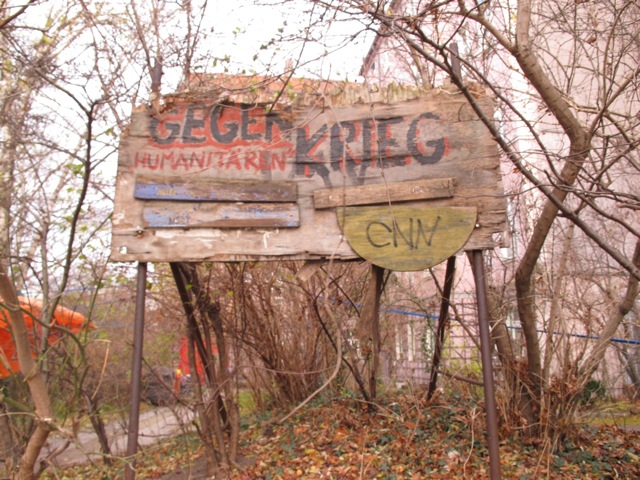He wasn’t fast enough. Just as he was lowering himself into his seat, someone else slid underneath him, to claim it. Why the guy didn’t end up landing on his competitor’s lap remains a mystery. He must have had good reflexes. Just as quickly, he bounced up into the aisle, glaring at the man who beat him to it.
The overweight Caucasian, from the looks of it, in his mid-thirties, was determined to hold his ground. Placing a pair of foam headphones atop his head, he made an obvious effort of turning his iPod on, in order to tune the scene on the subway car out. Seeking to avoid eye contact, he looked down, focusing his attention on the floor.
The loser, an Arab man, roughly the same age, looked to the other side of the aisle. Two young girls in hijab, and a middle aged man, perhaps his father, signaled to him silently, with their eyes, and their hands. There was something more to this than just a race for a seat on a crowded train. They all knew it. But there was nothing they could do.
I looked up at the video screen fixed to the ceiling of the Ubahn carriage. The night before, it had been repeatedly showing a political message, in German, encouraging tolerance of other races. GEGEN INTOLERANZ (Against intolerance) it read. GEGEN RASSIMUS (Against racism). Hoping the same programming was on display, I was disappointed. Today, it was just news.
“It’s really intense that that they’re broadcasting this message,” I remember telling my American companion, who was also with me on this ride. “The authorities just uncovered a neo-Nazi cell in Saxony, who they believe are responsible for the murder of nearly a dozen Turks. Everyone’s talking about it. Germany is stunned by the news.”
Home in Berlin for a week, in order to attend to spend time with my best friend, who was visiting from the US to work on a recording project, it was hard not to be touched by the news. My first night back I felt like I was in one of the newspaper articles I’d been reading about the killings.“Turkische Scheisse,” (Turkish shit) a young skinhead, belted out at two Turkish teens who live on my block, as I headed out for dinner.
Pissed, the boys placed themselves in front of the fascist, challenging him to pass. Standing to their right, I took the scene in, shocked by what I was watching. “Seig Heil,” they shouted in unison, raising their arms in a Nazi salute. Wide-eyed, the skinhead turned around and ran down the stairs to the Rathaus Neukölln Ubahn. Giggling, the Turks slapped each other high five, and continued heading north, on Karl-Marx-Straße.
For anyone who lives in my neighborhood, such events are not unusual. Though it’s a decidedly Muslim area, populated by Turks, Kurds, and a highly visible Palestinian merchant community on the nearby Sonnenallee, a fair number of ethnic Germans still reside in the area. Extremists, from nearby suburbs, are said to come in and harass the locals.
White and green stickers, sporting a drawing of a cactus, with statements such as “Pas de Place Pour Les Nazis” (Neukölln-gegen-Nazis.de), in French and Arabic (among other languages,) do little to dissuade outsiders that the area is not a place of ethnic conflict, even if a high percentage of its residents are foreign-born (estimates go as high as 50%,) and practicing Muslims (approximately 20%, according to a number of surveys.)
And yet, for every politically-correct piece of agitprop in the neighborhood, one will encounter equally racist shill. For example, for the longest period of time, the pay phone around the corner from our apartment had the words “Raus Nazis Turken” (Nazi Turks Out) written around the receiver. Twenty feet from a Turkish cafe (the appropriately named Simit) and grocery, anyone using the phone would be forced to read the politically ambiguous statement.
Though I never had any need to use the phone, for the first few months that we lived in Neukölln, I always felt the urge to pop in a coin, and tell the operator in English what had been written there. “Do you know how many Turks see this every day?” I imagined myself telling them. “Send somebody out here now, and scrape this shit off.”
But, I didn’t. I have an active imagination, and I have a habit of consoling myself for feeling so frustrated, by indulging such fantasies. Indeed, when you’re a foreigner, when you don’t speak the language, when you continually encounter racism, it’s a recipe for an extremely rich private life. That is, rich, if you feel somehow compelled to process such things, rather than bury them, as though they are unmanageable.
“Germany’s too easy,” an American friend, and a longtime resident of Berlin, told me, frustrated by an article of mine discussing ethnic stresses in the city. “Couldn’t you choose something a bit more difficult?” I could relate. Equating Germany with Nazis, and discussing discrimination in the country, frequently, and continually, risks problems of cliché. Not just in terms of poor analysis (of which there is a lot) but also, in terms of not getting what the country’s problems with minorities actually are.
For every objection, like that of my friend, to not repeat tired old tropes, there is an equal amount of despair about thinking through any of it at all. “You can’t be writing about that,” said the Italian Jewish editor of a news agency where I interviewed for a job last fall. Having worked in Germany herself, and studied the country’s fledgling Jewish population for her own work, she told me, looking rather concerned, “I can’t see what point there is in covering that situation. It’s hopeless.”
With perspectives like this, it’s difficult to imagine finding any support for raising concerns about the imperfections of German multiculturalism. Indeed, making a case for their discussion, outside of the parameters of discouragement – from the right, or from the left – remains one of the central tasks of anyone who takes the predicament of pluralism in Germany, let alone anywhere else, in Europe, seriously. Racism remains a problem. Framing it correctly, so that everyone will take it seriously, just like they would take such an issue in another EU country, is an equal challenge.
Part of doing so, I think, means being willing to recount that which might be termed stereotypical, as it is subtle, or unique, such as what my friend and I witnessed on the subway. Another way of putting it is that for every unique example, there’s an equally clichéd one behind it. The problem is our insensitivity to cliché. Imposed or not, it demands new ways of recounting old things. However, there are limits to even doing that. Sometimes, a spade is a spade, and we have to come to terms with that.
The day before I left Berlin, I took myself out for lunch in Richardplatz, a beautiful, medieval-looking square, two blocks south of our apartment. Replete with Sardinian, Austrian, and Indian restaurants, (and a Turkish deli) it’s a direct reflection of Germany’s transition to an immigrant society. The square is also home to a Die Linke (Left Party) office, and, from the looks of it, a former squat, with a great big anti-war sign that reads “Gegen Krieg” (Against War) with smaller writing that says “Humanitaren”, and “CNN”, the tag of a local graffiti artist, at the bottom. You can’t miss it.
Having inhaled a bowl of mutter paneer at Shaan, I pulled out my camera, and began scanning Richardplatz, looking for new political flyers and graffiti. Nothing especially stood out, except for the anti-war sign, which I’d photographed before. Uninspired by how typical the language was, I decided I’d shoot the sign again, anyway. The light was good.The trees were bare. It might prove to be a compelling picture.
Just before I took the photo, an elderly man exited a building two doors down. He had a bugle in his hand. Slowly, he began to play an old German military song I recognized, from an old vinyl LP I own, of music from the Third Reich. I couldn’t believe what I was hearing.
Neither could a nearby pedestrian, who put down two big bags full of groceries, and took in the impromptu nostalgia revue. We made eye contact, and nodded our heads in acknowledgement of what we were hearing. Two minutes later, the musician concluded his performance, and went back inside.
I thought back to the two Turkish kids, who gave the Hitler salute to their skinhead challenger. Their appropriation of such a clichéd gesture certainly meant something to the German. Perhaps it was the way the Turks expressed themselves. There’s no arguing with the body language. Everyone still knows what Seig Heil means.
Photograph courtesy of the author






I think it is an altogether different animal than the 1930s nazism, even though both superficially look similar. For one thing, the “old” nazism was directed from above, by the state, whereas the “new” nazism is coming mainly from below, against the state. The “new” nazism is history repeating itself twice as a farce, “anxiously conjuring up the spirits of the past to their service, borrowing from them names, battle slogans, and costumes in order to present this new scene in world history in time-honored disguise and borrowed language,” as the Old Man aptly observed.
Paradoxically, the “new” nazism is the outcome of the same social process that gave birth to left-wing anarchism as well as neoliberalism. That social process is triumph of the individual over collective. As a result, society has become a gigantic marketplace in which individuals compete for attention. And the only way they can succeed is to become louder, more attention grabbing than others. This gave birth of the activist culture http://libcom.org/library/give-up-activism that renounces the reasoned and level headed discourse of the mainstream “bourgeois” society with bombastic and the outrageous “counter-cultural” spectacle. Conjuring up the outrageous costumes and battle cries from the past is just a natural consequence of this process.
You hit the nail on the head, Wojtek. That’s a crucial difference to point out about today’s Nazis. It has an insurrectionist, up-from-the-margins kind of quality to it. The aesthetic allusions are just that. It doesn’t make them any less dangerous. It just obscures their contemporaneity.